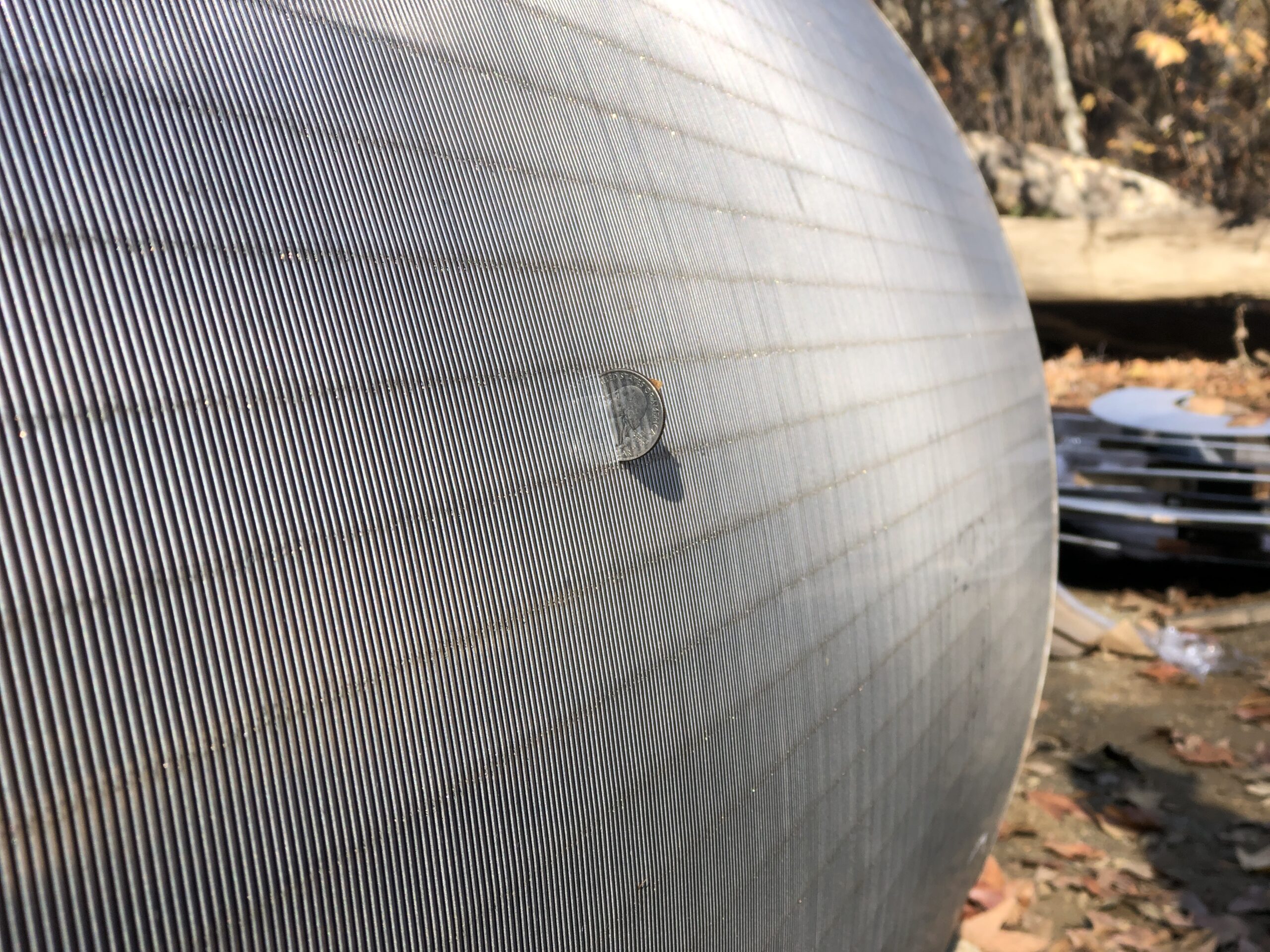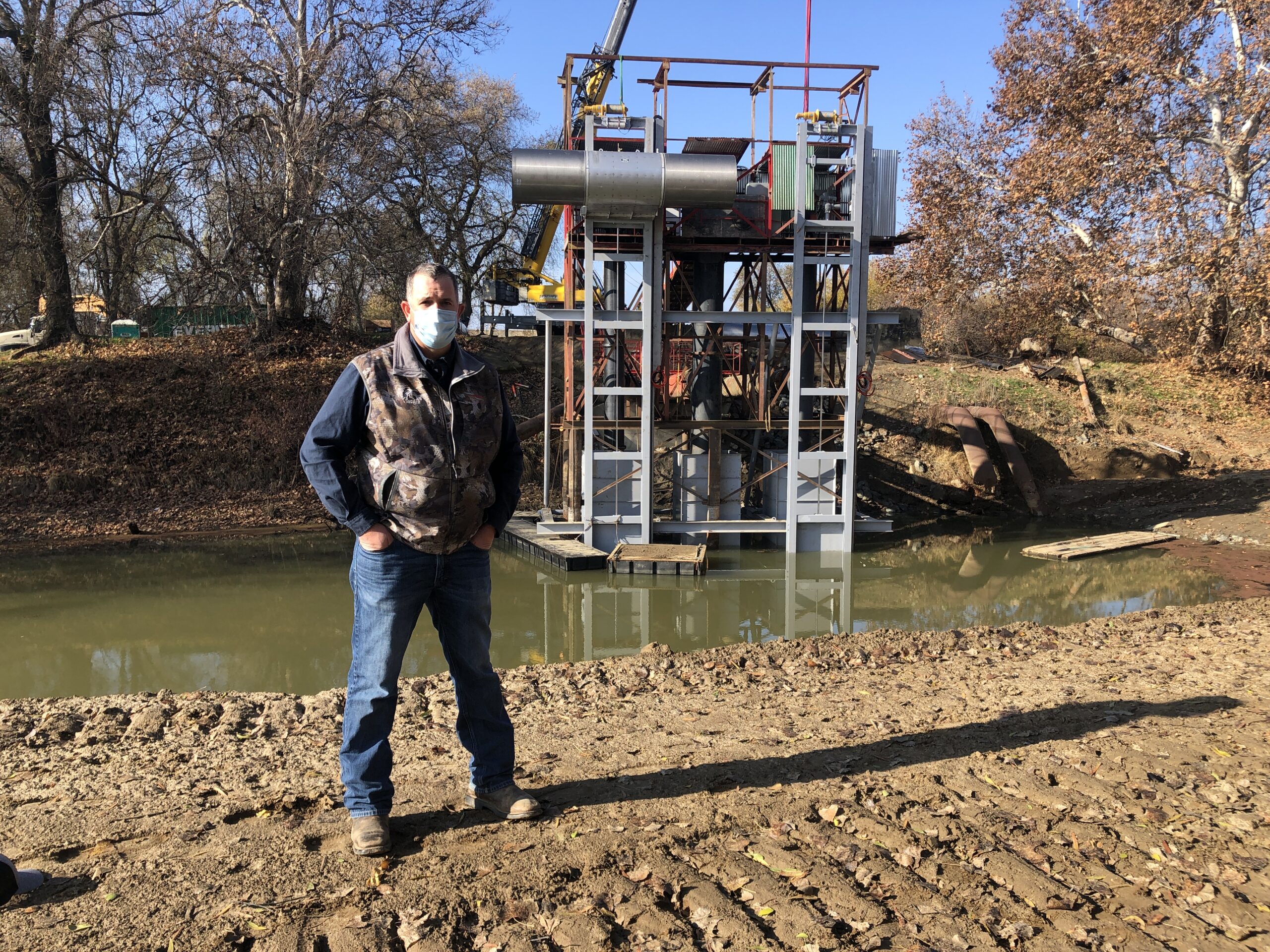Screen Saver
Contributed by Jennifer Harrison
Protecting fish in the Sacramento Valley takes time and teamwork. This was keenly apparent on a recent morning along the Feather River in South Sutter County just outside Montna Farms. The event? Instillation of a modern, new fish screen to protect Chinook Salmon and Steelhead Trout. The project, officially known as Garden Highway Mutual Water Company Fish Screen, was over a decade in the making.

Screen Time
A fish screen is a barrier between fish in the river and intake structure pumps used to divert water out of the river.
“From records that I can see this pumping station was built in the 1940’s” explained Jon Munger, Manager of Garden Highway Mutual Water Company and Vice President of Operations of Montna Farms. Montna Farms is a rice grower in the region and a landowner in the water company delivering water to other landowners in the area, they depend on water from this river to irrigate crops and thus grow food.
“This big trash grate, that’s what used to be on the pump, it was just designed to keep leaves, sticks and branches from going in the pump,” said Russell Berry IV, Owner and President of Intake Screens Incorporated whose team designed and retrofitted the existing structure with a modern fish screen. There is a science behind this business. A lot of math too.

“When we design a screen to comply with the state and federal criteria, we use a wedge wire screen, which has a 1.75 mm slot. This is about the thickness of a quarter and keeps any fish from entering the intake. Also, the screens are designed to have low approach velocity of .33 feet per second. For every cubic foot of water, we will have at least 3 square feet of screen surface” added Berry.
Compliance, Cooperation and Time
Fish screens are nothing new in the Sacramento Valley, products of the Endangered Species Act Congress passed in the 1970s, as detailed by Ashley Indrieri, Program Manager with Family Water Alliance.
“There’s been a prioritization through the state and federal government of screening larger diversions, and this was one of the larger ones that was probably left unscreened because of engineering and design complications, not the landowner, who has been very proactive for decades. It was not an easy one. Had it been easy, it would have been done a decade ago.”

Munger agrees.
“It took several entities over several years to get to the point where we are today, figuring out, with all our feasibility studies and working with a team: Family Water Alliance, NCWA, California Fish and Game, Bureau of Reclamation, our engineers, quite a team to put together, it took a lot of partners.”
The pump’s location (it is on a long intake channel, as opposed to being on the main body of the river), permitting and funding all contributed to the lengthy timeline. Funding came from the Bureau of Reclamation, California Department of Fish and Wildlife and through Garden Highway Mutual Water Company itself.

Back on the banks of the river, a large crane lifts the shiny new fish screen into place, and Chief Operation Officer of Family Water Alliance Nadine Bailey puts it best.
“These projects are a perfect example of forward thinking, environmentally conscious work that’s been going on for the last couple decades on the Sacramento and Feather River.”
